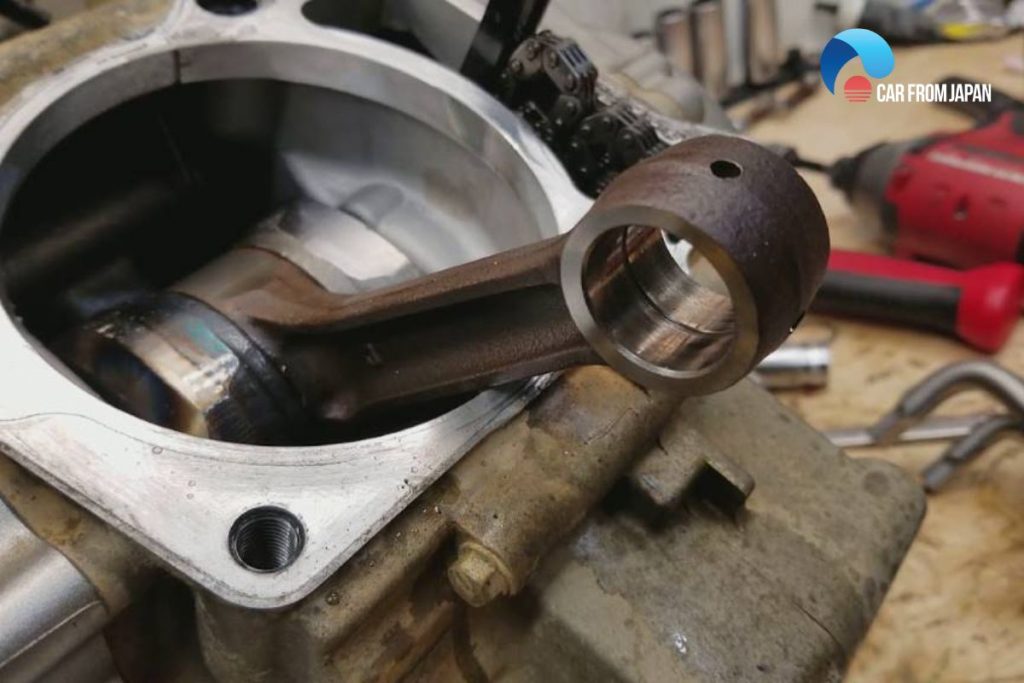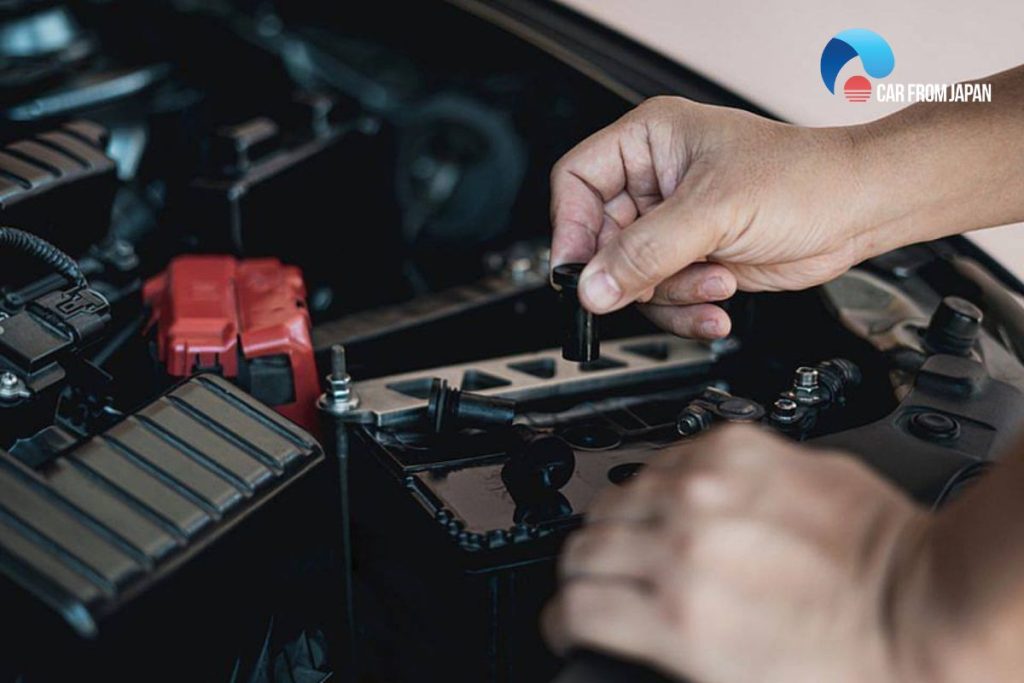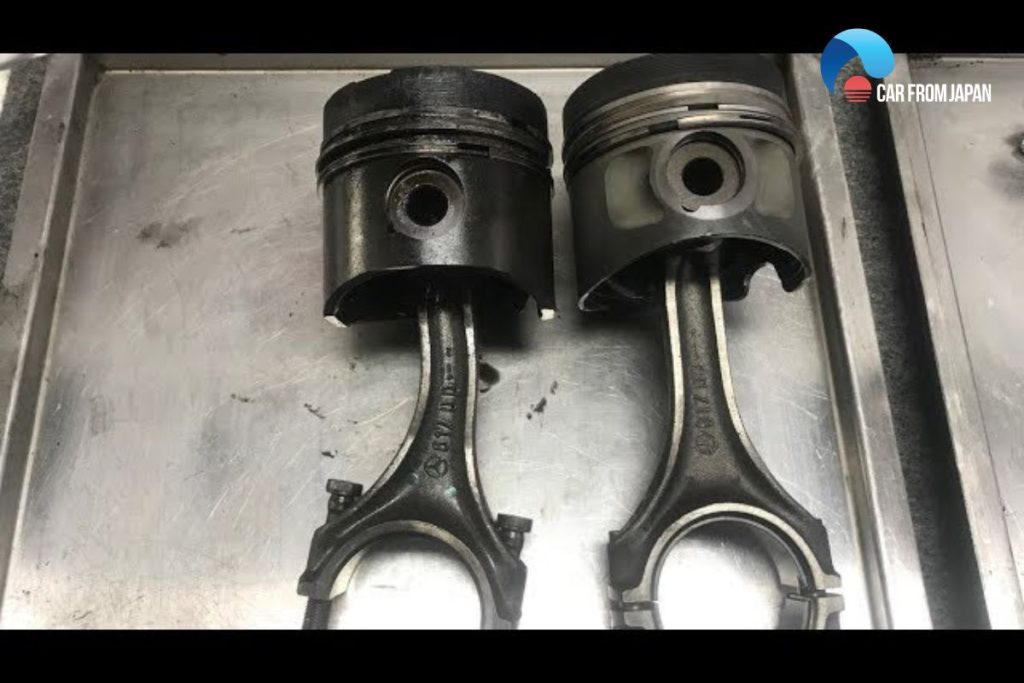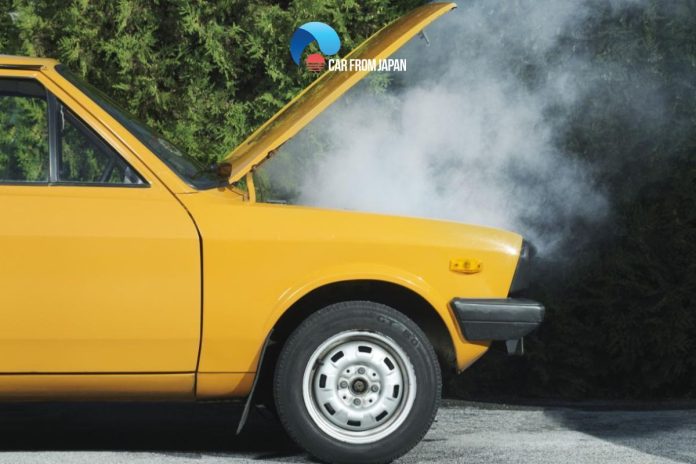It is easy to find out how to unseize an engine that ran out of oil. We have a useful solution that will provide the instant answer to how to unlock a seized engine.
People usually think that if the engine is seized due to a shortage of oil, there is nothing left to do. It is not true!
You can treat the seized engine with the right technique. Let’s explore now!
Contents
How To Unseize An Engine That Ran Out of Oil?
An engine seizing due to running out of oil is a serious issue that requires prompt action to prevent further damage.
When an engine lacks sufficient lubrication, the metal components can overheat, expand, and seize together, making it difficult or impossible to start.
However, with the right approach and some patience, it’s possible to unseize the engine and potentially avoid costly repairs. Here’s a step-by-step guide on how to unseize an engine that ran out of oil.
Note: Safety first
Before unseizing the engine, ensure the vehicle is parked on a flat, level surface with the parking brake engaged.
Make sure the ignition is off, and disconnect the battery to prevent any accidental starts. And don’t forget to wear gloves because some parts can be sharp and edgy! (e.g. piston rings).

Disintegrate
Pull apart the cylinder head and crankshaft in case the oil penetration doesn’t work. It is easier to do for smaller engines.
In multiple cylinders, investigate each tube for any fault. In case you didn’t figure out anything, open the cap and look for the cause.
Take off the cap of the erroneous cylinder and rotate the crankshaft. Now try to thump out the piston.
You can take the help of wood so that it remains as it is. Ensure that the disk is capable of sliding the bottom of the cylinder without hurting the crankshaft.
You have to be careful during the process as any of your maintenance tips won’t be able to tackle any mistake.
Whenever you think about how to unseize an engine that ran out of oil, the first thought that comes to mind is the stuck piston.
If the piston is still stuck even after applying this step, it’s time to contact the experts.
See More: How to Avoid A Car Breakdown?
Review the damage
No matter what caused your engine to seize, both the cylinder and piston are damaged. The stuck can be the reason for the broken ring.
Check the ring of the piston. If everything is alright, try to rotate it in the piston groove. The wedged rings can be cured with oil lubrication. Replace the rings if it’s required.
The seized engine due to lack of oil can distort the pistons. Clean it thoroughly in the perfect light. In case it’s torn or cracked, it is preferable to contact the experts.
Check the bottom
Don’t forget to check the connecting rods & wrist pin bearing. The knocking sound is the indicator of worn wrist pins.
Lay the connecting rods on a table or surface and ensure that it’s wrapped. In case you are installing the new rings make sure that you are familiar with the direction of the bevels. Properly position the gaps.
Once the pistons are successfully installed, coat both cylinder and the piston with clean engine lubrication. You can use a compressor to compact rings into the groove.
Put everything back together and try to move the engine. It will move liberally now.

What Are The Signs That My Engine Is Seized?
Engine won’t crank
The most obvious sign of a seized engine is the complete inability to start it. When you turn the key, the starter motor won’t engage and the engine won’t even attempt to turn over.
You’ll likely just hear a clicking sound, which might be the starter solenoid trying to engage, or nothing at all.
This silence or clicking differs from a dead battery, where you might hear a slow cranking sound or dimming lights.
With a seized engine, the starter is effectively locked up because it cannot rotate the crankshaft, which is the heart of the engine. This immobility signifies a major internal problem.
Loud metallic knocking before seizing
Often, a seized engine is preceded by loud, unusual metallic banging or knocking sounds coming from the engine bay.
This noise indicates severe internal damage, such as a spun bearing or broken connecting rod, which creates excessive friction and ultimately leads to seizure.
If you hear these alarming sounds, it’s crucial to stop driving immediately and investigate the cause.
Continuing to operate the engine in this condition will almost certainly worsen the damage and lead to a complete seizure. Early detection and intervention might save you from a costly engine replacement.
Oil leak around the engine
A significant oil leak, especially if accompanied by the other symptoms mentioned, can be a sign of a seized engine. Internal damage that leads to seizure can sometimes rupture oil passages or seals, resulting in a noticeable oil leak.
While an oil leak on its own doesn’t necessarily mean the engine is seized, it’s a serious issue that warrants immediate attention.
Combined with an inability to start the engine or prior knocking noises, it strongly suggests severe internal damage that may have culminated in a seized engine.
Low oil pressure warning light
If the oil pressure warning light illuminates on your dashboard, particularly if it stays on consistently, it could indicate insufficient lubrication within the engine. This lack of oil pressure can be a precursor to or a consequence of a seized engine.
Without adequate oil pressure, the engine’s moving parts experience increased friction, which generates excessive heat and ultimately can cause the components to seize. You should never ignore this warning light.
Overheating prior to seizing
An engine that overheats significantly, especially shortly before becoming completely unresponsive, may have seized due to the excessive heat.
Extreme temperatures can warp and distort engine components, leading to increased friction and eventual seizure.
If your engine overheated severely, and now won’t start, there’s a high probability it has seized.
Overheating can cause a variety of other engine problems as well, but coupled with an inability to crank, it’s a strong indicator of seizure.

What Causes An Engine To Seize When Running Out of Oil?
Increased friction and heat
Engine oil acts as a vital lubricant, reducing friction between moving metal parts like pistons, bearings, and the crankshaft. When oil levels drop significantly, this lubrication is lost, causing metal components to rub directly against each other.
This generates immense friction and heat, eventually leading to metal expansion, warping, and ultimately, seizure as the parts become jammed together.
Bearing failure
Engine bearings, thin metal shells coated with a soft bearing material, rely on a constant film of oil to separate them from the crankshaft and connecting rods.
Without sufficient oil, these bearings overheat rapidly and the soft bearing material can melt or wear away completely.
Piston seizure
Pistons move rapidly within the cylinders, relying on a thin film of oil for lubrication and cooling. When oil runs out, the pistons experience increased friction and heat, especially at the piston rings where they contact the cylinder walls.
The extreme heat can cause the pistons to expand more rapidly than the cylinder walls, leading to the pistons seizing or becoming stuck within the cylinders.
Connecting rod failure
The connecting rods, responsible for transferring combustion power from the pistons to the crankshaft, rely on proper oil lubrication. A lack of oil generates significant friction and heat at the connecting rod bearings.
Consequently, the bearings may fail. In severe situations, the connecting rod can fracture or deform, resulting in a seized engine and the possibility of additional damage within the engine block.

How To Prevent The Seized Engine That Ran Out Of Oil?
Here’s some tasks you can do to prevent this issue and maintain your car performance.
Regular oil changes
Adhere to the manufacturer’s recommended oil change intervals. This is the single most important step. Use the correct oil viscosity specified in your owner’s manual.
Check oil level frequently
Make it a habit to check your engine oil level at least once a month, or more frequently if you drive long distances or in demanding conditions. Top off the oil if it’s low.
Address oil leaks promptly
Any oil leaks, no matter how small, should be investigated and repaired immediately. A small leak can quickly become a major problem.
Pay attention to warning lights
Never ignore the oil pressure warning light. If it illuminates, pull over safely and stop the engine as soon as possible. Check the oil level and seek professional help if needed.
Monitor engine temperature
Keep an eye on the engine temperature gauge. Overheating can be a sign of low oil levels or other problems that could lead to seizure. If the engine overheats, stop driving and let it cool down before checking the oil.
Use quality oil filters
A good quality oil filter helps remove contaminants that can contribute to engine wear and oil breakdown. Change the filter with every oil change.
Avoid overloading
Excessive loads put extra strain on the engine, increasing oil temperature and potentially accelerating oil breakdown. Stay within the vehicle’s recommended weight limits.
Proper break-in procedure
If you have a new or rebuilt engine, follow the manufacturer’s recommended break-in procedure carefully. Proper break-in is crucial for establishing good lubrication and preventing premature wear.
Pre-trip inspections
Before long trips, check your oil level, along with other essential fluids, to ensure everything is in order.
Check out this video from Project Farm to get some common signs of engine locked up with no oil and how to fix this issue!
FAQs on Unseizing An Engine That Ran Out Of Oil
Is a seized engine the same as a locked engine?
While both terms refer to the engine not turning freely, a locked engine may result from other issues, such as a malfunctioning starter or transmission.
A seized engine specifically relates to damage from oil starvation.
Is unseizing an engine a guaranteed fix?
Unseizing an engine is not always a guaranteed fix, especially if the engine has suffered significant damage from running without oil.
In some cases, the damage may be irreversible, and engine replacement or major repairs might be necessary.
Can an engine seize temporarily and then become operational again?
In some cases, an engine may seize temporarily due to minor issues, such as rust or debris, and may become operational after applying penetrating oil and gentle turning.
However, persistent engine seizures require professional attention.
What if I continue to force the engine to turn even if it’s seized?
Forcing a seized engine to turn can lead to catastrophic damage, such as bent connecting rods, warped cylinder walls, or broken components.
It’s essential to stop any attempts if the engine does not turn freely.
Conclusion
Unseizing an engine that ran out of oil is a delicate process that requires caution and patience.
While DIY attempts and know how to unseize an engine that ran out of oil may work in some cases, it’s essential to recognize when professional expertise is necessary.
For more insightful Car maintenance tips, follow Car From Japan today!




Well my goodness what ideas. I wish I would have known this years ago. All you need is a piece of wood and some screwdrivers,completely take the motor apart and rebuild it
HI,I have a land rover discovery 2.7i diesel. Travelling down a road the warning light came on and seconds later the car stopped. The engine had seized. I was told this is a fault with this vehicle/engine. Is this correct and can it be repaired. Can you help?